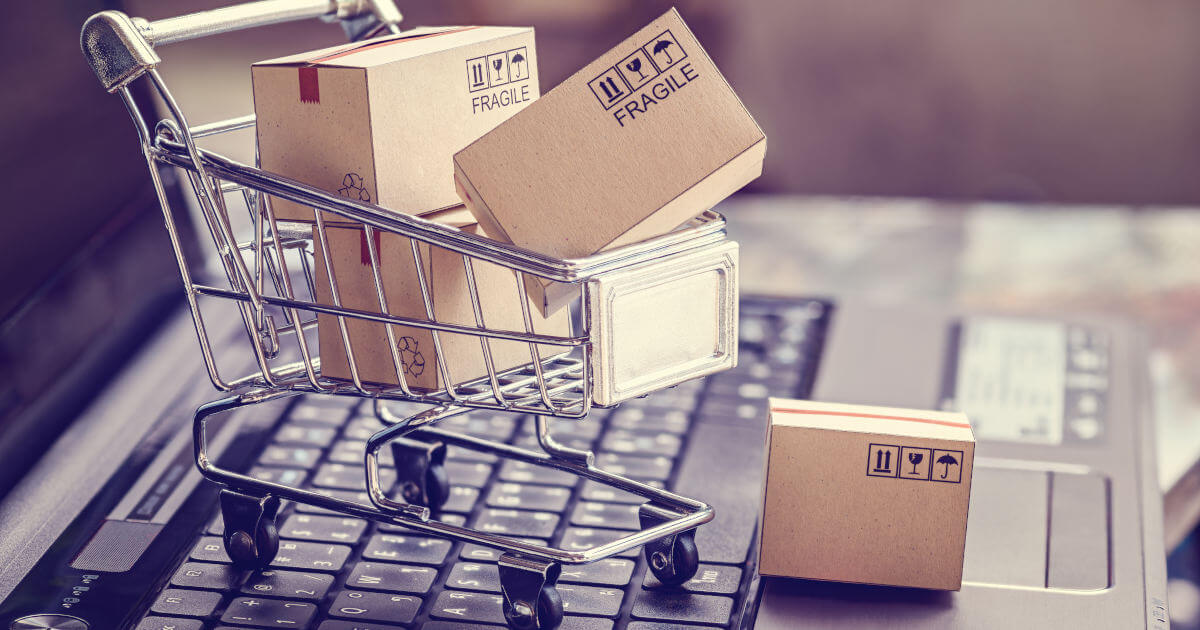How to start dropshipping – guide for beginners
The world of online marketing is known to be in constant flux. Countless people are on the lookout daily for products and/or ways to sell them online. One such way is called dropshipping. In short, this eCommerce model is an online business whereby goods for sale are not stocked by the actual seller. Instead, the seller is merely a link between the customer and the supplier, the product manufacturer, or a wholesaler. The following explains how to become a dropshipper and what you need to bear in mind.
Cheap domain names
Domains as original as your ideas. What are you waiting for?
Make your project a success with the perfect domain extension!
Product sales without stock: pros and cons
If you’re toying with the idea of starting your own dropshipping business, it’s worth considering the advantages and disadvantages. One of the biggest advantages of the business model is that as a dropshipper, you don’t have to worry about purchasing your goods or storing them. Moreover, you are not tied to a single place – the Internet opens up the entire world as your business location (so long as you have a working Wi-Fi connection).
Aside from the countless positive aspects, take note of the risks of dropshipping. As a dropshipper you are reliant on a supplier and take responsibility if product-related errors occur.
In the following, we compiled an overview of the main advantages and disadvantages of dropshipping. More details are also available in our article ‘What is dropshipping?’:
| Pros | Cons |
|---|---|
| ✔ Easy entry into eCommerce | ✘ No direct contact with customers |
| ✔ Not required to purchase goods | ✘ Dependent on the reliability of the wholesaler or manufacturer |
| ✔ Zero costs to stock and store goods | ✘ Full responsibility for shipping and product defects |
| ✔ No/lower insurance premiums | ✘ Delivery delays when manufacturer runs out of stock |
| ✔ Increasing sales through product diversity | ✘ Complicated shipping process when customers buy products from different sources |
| ✔ Location-independent working thanks to the Internet |
The term ‘dropshipper’ tends to be used in two different ways. On the one hand, it refers to a supplier who is involved in storing and shipping products, and on the other hand, it can refer to the operator of a dropshipping business who does not have to deal with storage. In this article, we refer to the latter.
Choosing the right dropshipping product
If after weighing the pros and cons, you've decided to start a dropshipping business there are important questions that need answering right from the get-go: What products will you offer and which are best suited to being sold through your webshop?
Choosing a profitable business idea is not always easy, because many offers tend to be available across numerous other shops and demand is influenced by many factors. Trends vary, prices fluctuate, seasons come and go. For this reason, before starting a dropshipping business, it’s best to thoroughly research the right merchandise. Social networks like Pinterest, eCommerce sites and Amazon's bestseller lists, and online services like Google Trends will show you which products sell like hot cakes. From home furnishings to technical accessories to fashion and accessories – the selection of sale categories is huge.
The best dropshipping products tend to be useful, rare, or cheap ones. Ideally, you can sell niche items (legally compliant ones) that are popular, but aren’t in heavy competition with other online shops. Product groups that achieve the highest sales figures in the dropshipping business include interior design items, health and beauty products, and jewellery.
In contrast, there are plenty of products that are not suited for dropshipping. These include, for example, items that are large or bulky and/or fragile, items that are not allowed to be advertised or sold and products that appeal to mass tastes and are therefore available everywhere.
The right partner on your side
Once you’ve discovered your perfect product niche, you’ll want to find the right partner for your online business who will be responsible for the storage and delivery of your products. As already mentioned, choosing your supplier is one of the most important decisions you will make because the products ordered through your newly launched online shop will be delivered by them. A reliable and well-known supplier ensures that customers are satisfied and respond positively to your business.
Other aspects to recognise a good provider by are a wide range of goods, high-quality products, and short shipping times. AliExpress and DHgate are among the best dropshipping providers worldwide.
Creating your dream website together!
No time to create a website? Let us take care of it! With the MyWebsite design service, our team of web designers and copywriters will build an agency-quality website for your business or project for a fraction of the price!
How to start your dropshipping business
Launching a dropshipping business requires investment of time and money. A budding dropshipper should budget for the registration of a domain, a subscription to an eCommerce software and possibly payments for staff or advertising measures. The latter tend to be the most expensive.
Once you’ve planned your budget, you can select from several options to start your online shop and dropshipping business. If you don't want to buy an existing webshop, you can start your business from scratch. This will require configuration of an eCommerce platform which is easy enough using one of the best WooCommerce dropshipping plugins, for example.
All beginnings are hard, but it doesn’t need to be that way. Budding dropshippers can use Managed WordPress hosting to create their website and simply connect to WordPress WooCommerce for their eCommerce needs. The plugin for creating your online shop is suitable for beginners.
Advertise your dropshipping business
There is a reason why dropshippers put most of their funds into promotion. When selling products online it is crucial that you build and continuously promote your shop's (web) presence.
In the past, stationary stores relied on flyers, TV adverts, and time-honoured word-of-mouth advertising. Today, the Internet provides business owners with a wide range of options for getting their website out there. One of them is social media marketing. Platforms such as Facebook, Twitter, etc. can be useful to promote your dropshipping business. Apps like Instagram are particularly suitable for product photography to picture your products in the perfect light.
Another strategy to increase the exposure of your online shop involves linking it to a larger eCommerce platform. There are several good reasons why you may want to do so. First of all, it increases your chances of sales, because the majority of Internet users are drawn to marketplaces by popular online retailers such as Amazon and eBay when searching for a product. Furthermore, Amazon provides an advertising platform that you can use to promote items in search results. Not to mention that reviews are valuable to fine-tune the development and improvement of your shop.
The bottom line is that the (digital) exchange of information with customers has always been a vital element of conducting business. The Internet enables global communication at a much larger and time-independent scale. In addition to exchanges via social media, customer service, messenger services and chatbots, for example, offer the opportunity for direct dialogue with customers. And those who prefer indirect contact can make use of newsletters, podcasts, and blogs.
There are various options to communicate with customers. A business email that matches the domain of your choice should be part of the package. Online web forms and live chats for direct dialogue can make your business more appealing.







